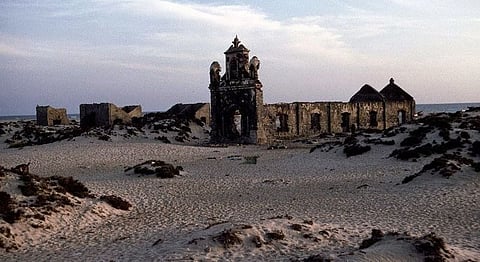
- HOMEGROWN WORLD
- #HGCREATORS
- #HGEXPLORE
- #HGVOICES
- #HGSHOP
- CAREERS
- ABOUT US
- CONTACT US

Every country has its own curiosities, myths steeped in history and history that’s shaped beliefs. India thrives on these legends and no matter where you go, there’s a story to be found. At the south-eastern tip of Pamban Island in Tamil Nadu lies the town of Dhanushkodi. In 1964 a cyclone formed off the coast and caused a tidal wave that hit the town, killing hundreds. Today, the government of India has declared Dhanushkodi and ‘Ghost Village’ and people are prohibited from venturing in after dark.
According to legend this is the spot where Lord Rama pointed with the end of his bow and built the bridge, Rama Setu to Sri Lanka to battle Ravana. The name Dhanushkodi itself means ‘end of a bow’ in accordance with this story. This bridge of floating stones was later submerged but can still be seen via satellite imagery and some still survive at the Temple of Rameshwaram, 20 kilometres away.
The bridge, also known as Adam’s Bridge is a natural wonder that stretched across the Palk Strait. Scientifically it’s known as natural tombolo, a series of limestone deposits that form a crossing across the water. But according to the story set forth in the Ramayana, it was the path built by the Vanara (ape men) so Rama could set out to rescue Sita, definitely the more alluring of the two explanations.
Dhanushkodi isn’t your run of the mill tourist destinations, there are no monuments or shopping opportunities to be found. Instead the barren landscape and mystical past lend the area a sense of almost monastic serenity. Many who visit report a sense of wonder, brought on perhaps by the eerie desolation or the knowledge that they’re standing in the midst of ancient history. Whatever the cause, Dhanushkodi remains one of India’s most enigmatic spots and is well worth a visit.
If you enjoyed reading this, we also suggest:
